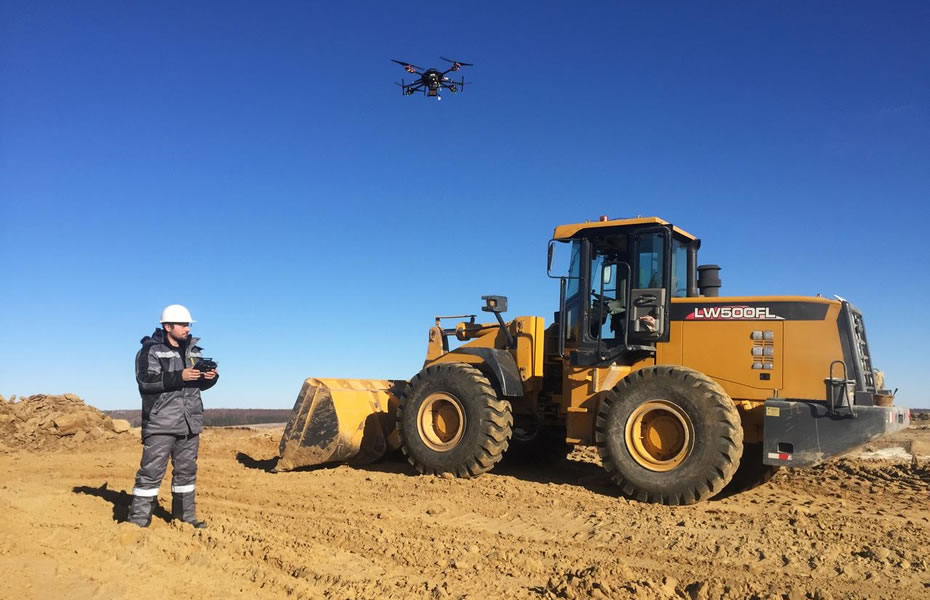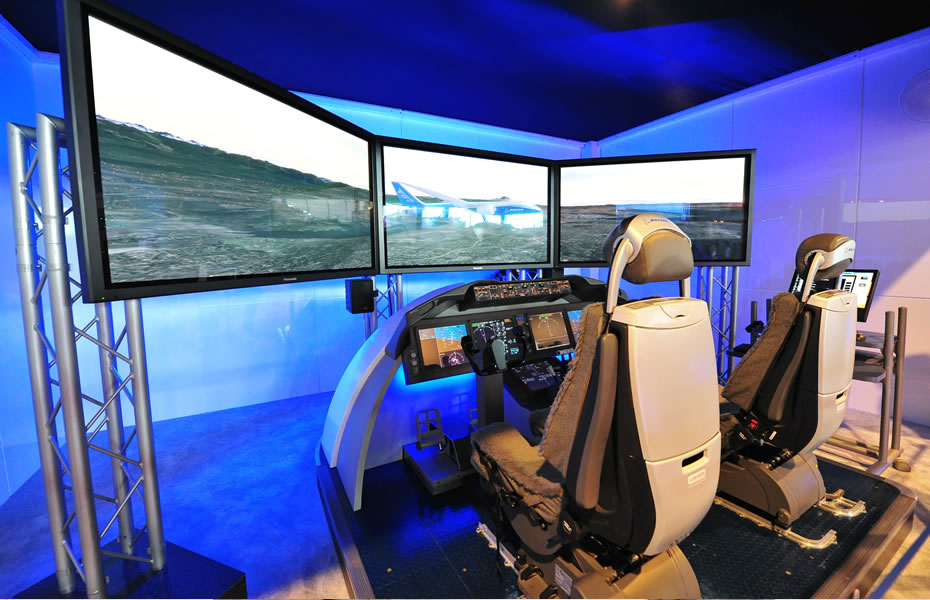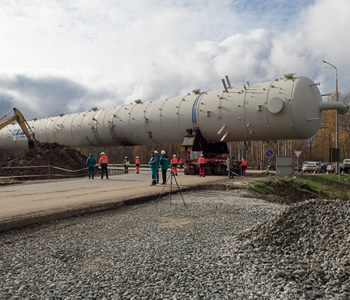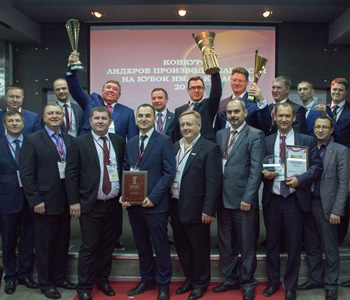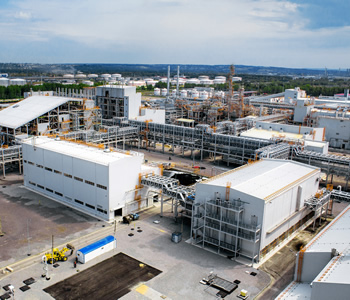In 2016, a robot became a full member of the World Economic Forum for the first time in its nearly 50-year history. It comes as no surprise that the biped android HUBO designed by the KAIST (South Korea) was invited to Davos, as the humanoid robot was meant to represent Industry 4.0, which Klaus Schwab, the lifelong chairman of the WEF, made the central topic of the Forum's meeting. During the event, HUBO made several presentations, while off-duty the robot entertained the participants by pretending to read a newspaper. "For the moment they asked me simply to undertake some simple tasks. See you in 2020, humans!" reads a note on the WEF web page published on behalf of HUBO.
Android HUBO designed by the KAIST (South Korea)
Steam engine and electricity were the first drivers behind major industrial changes, followed by computing machines. Now it is time for digital technologies to take centre stage. These are represented by robots, high-capacity machines, 3D printing, the Internet of Things, etc. The new technologies are expected to revolutionise our everyday life. For example, Klaus Schwab believes that transition to Industry 4.0 will make companies change their approach to work and creation of customer value. This is exactly what SIBUR's latest corporate forum called "Our Company" focused on.
Global access
Russian construction companies started using drones approximately two years ago. At first, drones were perceived as a mere toy. Now they are a force to be reckoned with: drones are used in complex systems helping to monitor work progress on major industrial sites. This is the type of solution that TraceAir, a young Russian company, came up with. Its drones regularly overfly the sites taking gigabytes of photos and videos. Aerial image data are then used to build a georeferenced 3D model.
Unlike with fixed cameras, there are virtually no restrictions that would apply to drones in terms of field operation and filming conditions.
A modern drone is an advanced computer rather than a simple camera. Access to the drone data is cloud-based, so users can get updates on the work progress from anywhere in the world
By now, TraceAir has scanned around 100 construction sites with a total area of over 200,000 ha. One of their current projects is Gazprom's Amur GPP, which had the 4.0 toolkit introduced at the initiative of NIPIgaspererabotka, SIBUR's centre for facility design, supply and construction. In November, a unique airplane-type drone was delivered to the construction site. It was developed at an Izhevsk plant manufacturing UAV (for example, their drones are used by the Emergencies Ministry of Russia). With a maximum flight endurance of three hours, the robot can operate in the temperature and speed ranges of -40 to +40 °С and 65 to 120 kph, respectively.
The embedded software calculates volumes of stockpiled and excavated soil, the total area and perimeter of construction sites, as well as the number of deployed construction machines, comparing actual data against the design documentation. According to Alexander Ryzhov, Managing Director of TraceAir, this helps to keep a closer eye on the company's expenses. He believes that the next step could be the integration of drone data with augmented reality, which would give construction specialists deployed on-site an opportunity to compare actual developments with the 3 D model just by switching on a holographic display in their helmet.
New reality
There are some other areas where augmented and virtual reality technologies could be successfully applied, personnel development being one of the most promising ones. Air companies were the first to capitalise on the new opportunities, as they started using flight simulators to train their pilots back in the 1970s. Fr om the 1990s, similar systems have been designed for industrial companies. "Learning to deal with complex technological processes and equipment, as well as industrial safety issues are the key areas where virtual reality systems are applied," commented Stanislav Starykh, Head of Development at the Virtual Reality Lab. Simulators are used to work out a response to emergencies (for example, there are devices that simulate methane explosions in coal mines to teach the employees how to behave in a stressful environment).
Air companies were the first to capitalise on the new opportunities, as they started using flight simulators to train their pilots back in the 1970s
"Equipment operator training is especially relevant for companies that use advanced and expensive technologies. For example, our potential customers include drilling companies, most of which recruit staff straight fr om the market and do not provide extensive training. Due to this, one of the companies has already suffered major borehole and equipment damage that led to the cancellation of a drilling contract. Total losses amounted to USD 70 m," said Stanislav Starykh. Virtual reality training may help prevent such damages, as there is an increasing supply of equipment instrumental in implementing the boldest ideas.
Back in the 1990s, they primarily used video projectors: the trainees were sent into a room where the required images were projected onto the walls. This equipment did not, however, create a sense of full immersion. Moreover, it was bulky and quite expensive. According to Stanislav Starykh, currently they mainly use helmets providing for a greater sense of immersion and allowing the team to work within a single virtual space. The equipment is not perfect so far, but new samples keep coming. Oleg Novozhilov, Director of Corporate Education and Knowledge Management at SIBUR, told us that his Company is now looking into the existing market opportunities. It may well be that employees of ZapSibNeftekhim, a facility currently under construction, will undergo such training.
Mr Novozhilov also believes that it would be useful to leverage the so-called "augmented reality" technology that integrates virtual objects into the real-world environment (for example, the well-known Pokémon Go utilises the same technology). "One can monitor the equipment by displaying the key operating parameters downloaded fr om the information systems in the real-time mode right next to it. The checks may be performed by simply placing a phone or tablet camera on the item in question," Mr Novozhilov said. Going forward, there may be new breakthrough solutions in this domain. Currently, Microsoft is working on them. "People will put on special glasses and see augmented reality objects, with which they will be able to interact. In the future, we might be dealing with holograms of other people, like in the Star Wars," said Stanislav Starykh.
All-around printing
3D printing (or additive manufacturing) is a topic of particular interest for petrochemical companies. On the one hand, it offers new sales opportunities, as polyamides, photopolymers, metal and composite powders are the key 3D printing feedstock. On the other hand, the implementation of additive manufacturing at production facilities may help reduce equipment maintenance expenses, as it allows companies to print the required parts on the spot without having to keep an emergency stock or build relationships with a wide range of suppliers. A lot of industries have already adopted this approach. For example, Halliburton, an oilfield services company, uses 3D printers at its offshore platforms wh ere one hour of downtime can result in damages worth up to USD 750,000.
In Russia, 3D printing is primarily employed by the metallurgical, mechanical engineering, air and space industries, including NPO Energomash, Tikhvin Freight Car Building Plant, Uralvagonzavod, Voronezhselmash and Tushino Machine-Building Plant. Yet, so far they have been using 3D printers to make prototypes of spare parts rather than finished products.
In Russia, 3D printing is primarily employed by the mechanical engineering, air and space industries
"However, these technologies no longer belong to the realm of science fiction. Their application can be of particular relevance for remote and hard-to-access production sites, such as our gas processing facilities. It would be reasonable to implement new technologies there as soon as 3D printing becomes more accessible and affordable in the market. This would enable us to produce spare parts on site in case of unscheduled repairs and rid us of the necessity to keep an emergency stock," said Oleg Novozhilov. There are many snags, including product certification, but Mr Novozhilov believes that all the issues can be successfully resolved.
Big data
Machine learning is another way to bring down production costs. In summer 2016, Yandex Data Factory successfully rolled out a recommendation system at Magnitogorsk Iron and Steel Works to optimise the consumption of ferroalloys and supplementary materials in the oxygen-converter plant. The use of advanced technologies has enabled the company to produce steel of the desired composition and quality, cutting the consumption of feedstock by 5% (in volume terms). To build the predictive chemical composition model, IT professionals used data on more than 200,000 smelting operations over the last seven years of the plant's life. Unlike with traditional methods that require input assumptions about how the features of an end product depend on the feedstock composition, in machine learning the computer verifies different hypotheses independently.
Maxim Soloviev, Head of SIBUR's Lean Six Sigma, has made it clear that the use of big data at production facilities goes hand-in-hand with the roll-out of lean technologies, including the Six Sigma doctrine developed by Motorola in the 1980s and enhanced by General Electric (GE) further on. Six Sigma is one of the most widespread global methodologies seeking to streamline operating performance and fight production defects by building mathematical process models based on historical data. This method helps identify conditions for excellent results, and, based on those, build an optimal management model. "The main advantage of Six Sigma projects is that they give us a predictable process outcome," said Maxim Soloviev.
SIBUR is currently rolling out GE's CSense, a software product previously known as Troubleshooter. "The software has been piloted at a number of production sites. What sets this product apart from its peers is that, with its ample capabilities, it comes very close to what they call "artificial intelligence". CSense can access a production dataflow within the prescribed limits and become a learning tool providing recommendations on the optimal management of a technological cycle," said Mr Soloviev. In practical terms, the software works as follows: in the control room, there are screens that display the actual values of monitored process indicators and the target values required for optimal results. The final decision is taken by a human, but it is the software that helps identify the best option.
There are certain processes, though, that are run solely by a machine. Some of the Company's production sites have implemented the Advanced Process Control (APC) systems that go beyond making recommendations. Based on the pre-installed model of a benchmark technological process, the system takes account of all deviations. It does not only report these deviations to the operator, but also makes adjustments to the equipment operations generating a control signal of its own. "Depending on the current production needs, you can set priority tasks for the system, including a focus on energy efficiency, or maximising output. Currently, the APC systems run only some of our production units, as we use them wh ere a distinct need arises," said Igor Kimyaev, Head of Improved Production Management.
What next?
Most of the experts believe that, in the near future, there will be no significant breakthroughs in the traditional petrochemical industry either in Russia or globally. Obviously, all the key players will keep working to expand their product mix, but this work is unlikely to lead to the emergence of a brand new market niche.
Hence, higher internal efficiency as a tool to ensure continuous product quality improvements and attractive pricing will be gaining more and more importance going forward. This is wh ere the 4.0 toolkit can come in really handy. "Previously, competition in our market relied heavily on the economies of scale and outsourcing of non-core business tasks. As of now, this trend has run out of stream. Advanced digital technologies are here to replace those solutions. For example, big data are becoming one of the most effective tools to boost efficiency in the petrochemical segment. This is why SIBUR keeps implementing these technologies at its facilities," said Alexey Agapkin, Head of SIBUR's Production Centre.
"There is no doubt that our industry lags behind tourism, banking, media and other sectors in implementing innovations. That is not to say that we are underachievers, as we are seeking to effectively use the fruits of progress, including the Industry 4.0 toolkit," commented Mr Agapkin. We are to see the practical results of this work in the near future.
Download PDF


